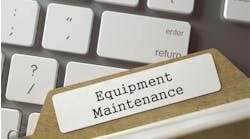At an appliance plant in the southern central United States, a maintenance electrician named Bob used the written feedback process to complain about climbing a ladder to measure voltages in a small panel as part of the preventive maintenance (PM) on a robotic welder machine. He suggested installing a voltage meter at eye level, thus eliminating the need to open a panel or use a digital multimeter (DMM).
The work analyst was the first person to view Bob's feedback; he passed his version to someone else, who passed his version to someone else and so on until four people had passed along some version of the feedback. After this game of “telephone” played out, the feedback came to the plant engineer as “Jim hates taking voltage measurements.” Jim had nothing to do with this feedback, and it's still a mystery as to how his name replaced Bob's.
To prevent feedback distortion, don't permit anyone to alter feedback until after discussing it with the submitter. The change should show the original and the revision with the submitter's signature approval.




